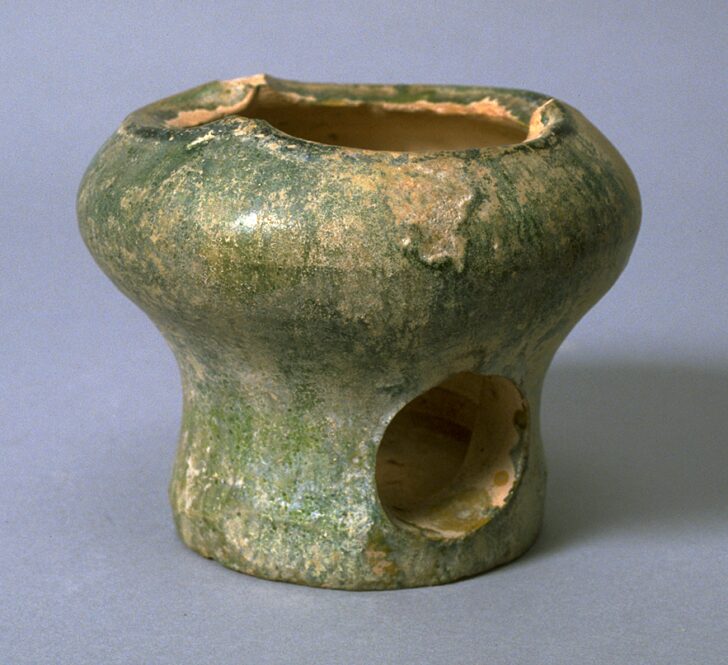Cooking Stove
Chinese

Description
These small models accurately represent the cooking utensils used by Chinese people two thousand years ago. In some rural areas, similar utensils are still in use today.
Subject Matter:
By the Western Han dynasty, basic household bowls, plates, basins, jars, etc. were produced in great quantity, not only for use in daily life, but also specifically for tombs as mingqi (明器), literally "bright objects", or grave goods, as a way to provide for the deceased. These mingqi included everything one would need during the afterlife, naturally, these objects reflected daily life during the Han. Mingqi could include houses, towers, gates, granaries, livestock pens, chicken coops, wells, cooking stoves, storage vessels, dishes, incense burners, lamps and figures such as horses, dogs, anthropomorphic animals, and people such as officials, guardians, servants and entertainers, and more. The number of ceramic mingqi items in a tomb could reach numbers of a few to several hundred objects. This miniature model of a stove would have been widely used by almost every stratum of society. The three supports at the top would hold a bowl over the top of a fire in the bottom of this stove, ventilated and fed through the round pierced hole in the lower side of the wall.
Physical Description:
A red earthenware, small, flat-bottomed pot with narrow base and wide bulbous neck with three protrusions at the rim, a large circular hole pierced into the side of the lower body, covered in a green lead glaze with iridescence and calcification.
Usage Rights:
If you are interested in using an image for a publication, please visit https://umma.umich.edu/request-image/ for more information and to fill out the online Image Rights and Reproductions Request Form.